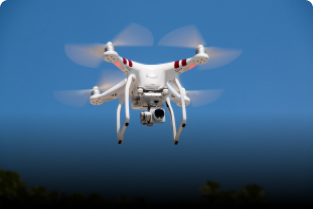Drones have rapidly become an essential tool in various industries, from agriculture and construction to defense and entertainment. As the demand for drones continues to grow, so does the need for skilled engineers who can design, develop, and maintain these flying machines. Electronics engineers, in particular, are well-suited for this role due to their understanding of circuits, sensors, and systems. However, to transition into the world of drone engineering, electronics engineers need to acquire specific skills beyond their core expertise.
Let’s dive into the key skills an electronics engineer needs to develop to become a proficient drone engineer.
1. Understanding of Aerodynamics and Flight Mechanics
Although electronics engineers are well-versed in circuits and systems, drone engineering involves more than just the electrical components. A solid understanding of aerodynamics and flight mechanics is essential to designing drones that fly efficiently. Knowledge of how forces like lift, thrust, drag, and gravity interact is crucial to ensuring the drone performs well under various conditions.
Drone engineers need to comprehend how these forces affect drone stability, especially when designing control systems that keep the drone balanced and responsive during flight.
2. Proficiency in Embedded Systems and Microcontrollers
Embedded systems are at the heart of drone functionality. These systems control every aspect of a drone’s operation, from motor speed to camera control. Electronics engineers are already familiar with microcontrollers, but to become a drone engineer, it’s important to master embedded systems specifically tailored to drones.
Drone engineers often work with microcontrollers like Arduino, Raspberry Pi, or more specialized chips for tasks like flight control, sensor integration, and communication systems. A good grasp of programming embedded systems, along with proficiency in languages like C and C++, is essential for creating custom drones or modifying existing systems.
3. Knowledge of Sensors and Control Systems
Drones rely heavily on various sensors (e.g., gyroscopes, accelerometers, GPS, and magnetometers) to maintain stability, navigate, and understand their environment. As an electronics engineer transitioning to drone engineering, you will need to have an in-depth understanding of these sensors and how to integrate them into a drone’s control system.
Control systems like PID (Proportional, Integral, Derivative) controllers are often used to ensure a drone stays stable and responsive. Having a strong foundation in control theory will help you design and fine-tune these systems for optimal performance. Understanding how to process sensor data in real-time and adjust flight parameters accordingly is vital.
4. Wireless Communication and Networking
Drones are typically operated remotely, so a strong understanding of wireless communication protocols like Wi-Fi, Bluetooth, Zigbee, and cellular networks is essential. Electronics engineers should also familiarize themselves with long-range communication technologies like LTE, 5G, or satellite communication if they plan to work on drones used for long-distance applications.
Knowledge of how to optimize data transfer and ensure secure, reliable communication between the drone and its controller or remote server is crucial. Understanding how drones transmit telemetry data, video feeds, and GPS coordinates wirelessly is a key part of the drone engineering process.
5. Power Systems and Battery Management
Efficient power systems are fundamental to drone design. Electronics engineers need to understand battery technology and power distribution in drones to ensure they can fly for extended periods. Drone engineers must be proficient in designing power systems that balance weight, efficiency, and longevity.
This includes knowledge of battery management systems (BMS), voltage regulation, and power converters, as well as how to minimize power consumption while maintaining performance. Drone engineers need to be aware of the specific power requirements for various drone components, such as motors, cameras, and sensors.
6. Flight Simulation and Testing
Before a drone takes to the skies, it’s essential to test its systems and behavior in a controlled environment. Simulation software like MATLAB, Simulink, or specialized drone simulators helps engineers model and test drone performance before building a physical prototype.
Proficiency in simulation tools enables drone engineers to predict how their designs will behave under various conditions, minimizing the risk of failure. Testing also includes performing real-world flight tests to refine the drone’s performance and control systems.
7. Knowledge of Drone Regulations and Safety Standards
As drones become more widespread, regulatory bodies have introduced rules and guidelines to ensure safe operation. Drone engineers must be familiar with local, national, and international regulations governing drone usage. In the U.S., for example, the FAA (Federal Aviation Administration) enforces regulations for drone flight operations, including weight limits, maximum altitude, and no-fly zones.
Understanding these regulations helps engineers design drones that comply with legal safety requirements, especially in commercial applications like aerial photography, surveying, or delivery services.
8. Problem-Solving and Critical Thinking
Drone engineering is an interdisciplinary field that requires excellent problem-solving and critical thinking skills. Whether you’re troubleshooting flight stability issues, improving battery life, or optimizing a control system, drone engineers must be able to think critically and find solutions to complex challenges.
Often, drone designs require innovation and adaptation. As an electronics engineer, you will need to be able to solve problems related to hardware, software, and the integration of different systems within the drone.
9. Software Development and Data Processing
Drone engineers often work with software that runs onboard the drone or on ground stations. Familiarity with software development, especially in real-time systems, is key to building reliable drone control and data analysis systems. Proficiency in programming languages like Python, C++, or JavaScript is essential for drone software development.
Additionally, drone engineers need to process and analyze data collected by the drone’s sensors, such as GPS coordinates, video feeds, or environmental data. Understanding data processing and machine learning techniques can be beneficial, particularly for advanced drone applications like autonomous navigation or precision agriculture.
Conclusion
Becoming a drone engineer is an exciting and challenging career path for electronics engineers. It requires a mix of skills ranging from hardware design and embedded systems to aerodynamics, communication systems, and regulatory knowledge. As drone technology continues to evolve, staying up-to-date with the latest advancements will be essential for success in this rapidly growing field.

